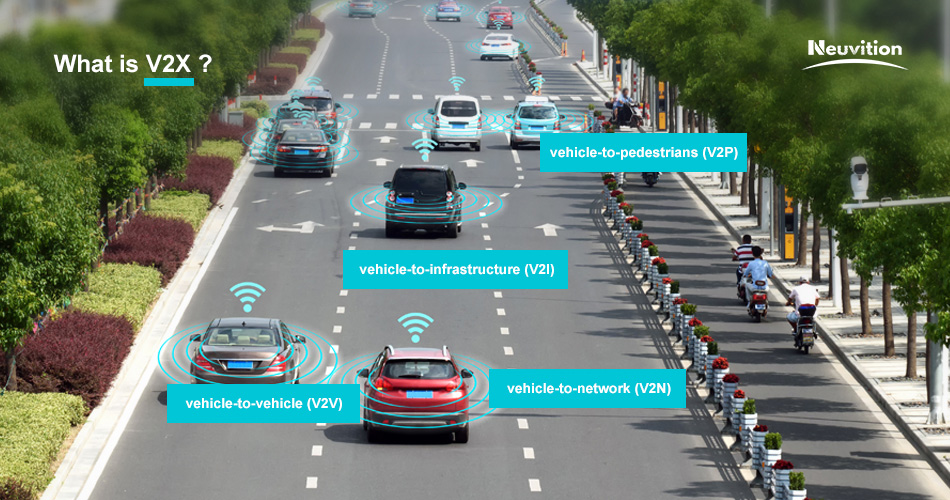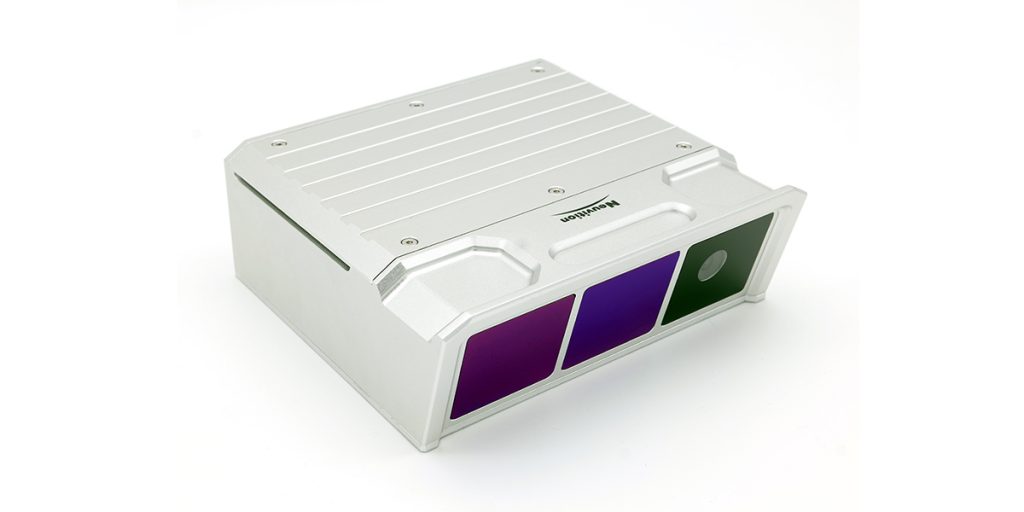What Are The Differences Between the LiDAR for V2X and The LiDAR for Autonomous Driving?
Author: Release time:2021-07-02 08:36:34
V2X is regarded as the foundation of smart transportation and smart cities, turning roads into smart roads, enabling them to interact with smart cars and management cloud platforms. In this scenario, LiDAR for V2X and other sensors, such as cameras, millimeter-wave radar work like human eyes to provide environmental information for smart transportation and smart cities.

LiDAR has become well-known in recent years with the rise of autonomous driving, especially a self-driving test vehicle fitted with LiDAR running on the streets and alleys. The role of LiDAR is still irreplaceable for cameras and millimeter-wave radars for L4-level autonomous cars. So is the role of LiDAR for V2X.
1. Why do smart roads need LiDAR?
Sensors such as cameras and speed measuring radars have already played a role in intelligent roads, such as various security surveillance cameras, illegal surveillance cameras, and speed radars for traffic control. While, for intelligent transportation and smart cities, only cameras and speed measurement radar is far from the actual application needs, because their accuracy for tracking moving objects such as vehicles is not far from enough.
The role of LiDAR for V2X is to provide information such as high-precision speed, position, direction, etc., as well as the state of motion, posture, and shape for a large number of moving objects on the road, including vehicles, pedestrians, bicycles, motorcycles, etc. Such information is vital to intelligent transportation and smart cities.
Intelligent transportation needs to provide real-time information of every intersection and every section of the road. Therefore, the devices, including LiDAR for V2X and roadside units, will be installed at every intersection and every section of the road. Of course, it is also necessary for every vehicle to have vehicle-end equipment for data interaction.
Sensors such as LiDAR for V2X and roadside units need to be installed at intersections and on both sides of the road to facilitate real-time perception of all traffic participants on the road. They provide information about the location, speed, and attributes of road traffic participants for smart cars and traffic management cloud platforms that involve V2X process, etc., and multi-target trajectory tracking and timely detection of abnormal targets, which play a decisive role in ensuring overall road safety.
As a terminal sensor device, LiDAR for V2X has begun to appear in intelligent transportation projects in new infrastructures everywhere. For example, Neuvition LiDAR is reported to have been serving for Guangzhou-Shenzhen Riverside Expressway to provide traffic information to secure road safety.

2. Differences between the LiDAR for V2X and the LiDAR for autonomous driving
V2X is the infrastructure of intelligent transportation and smart cities. As a sensor of smart cars, LiDAR can accurately perceive the surrounding environment information of the vehicle, thereby providing a basis for judgment for robot drivers, thereby realizing fully autonomous driving. As an intelligent road terminal sensor, the performance of LiDAR for V2X determines that it also plays an indispensable role similar to L4 autonomous driving, and it has a broad application prospect at V2X.
At present, the development direction of LiDAR is not only a product at the perception level. LiDAR with an algorithm chip can also act as a function of the eyes + nervous system, providing the highest-precision position detection and perception for smart cars and smart roads. The differences between the LiDAR used for V2X and the LiDAR used for self-driving mainly include:
1. Different working hours: the LiDAR for V2X must work 24 hours a day, while LiDAR for self-driving vehicles can take a break when there is no need to run;
2. Different working environments: the LiDAR for V2X needs to work 24 hours a day, so it must work in any weather environment. It needs to work in spring, summer, autumn, and winter throughout the year, whether it is raining, windy, snowing, or dusty. The LiDAR for self-driving vehicles may take shelter from the bad weather;
3. Different detection areas: The LiDAR for V2X needs to detect a bigger range, while the detection range of LiDAR for autonomous vehicles may concentrate on the direction of the vehicle.
4. Different installation methods and precision: different detection areas determine the requirements for installation method and precisions of the LiDAR technology (that is, the number of lines, the more number of lines, the higher precision) are different;
5. Different calibration methods: LiDAR for V2X needs to cooperate with other sensors and communication facilities, therefore, its calibration scheme is different from that for LiDAR for the self-driving car;
To conclude, because the LiDAR for V2X has more demanding requirements, especially for working in 24 hours and all weather conditions, this puts forward higher requirements on the technical capabilities and solutions of the LiDAR enterprise, which may be higher than the requirements of automotive LiDAR. It requires continuous testing and trial operation to provide stable and reliable products.

In the V2X system, there are many products involved through vehicle-side equipment, roadside equipment, and cloud platforms, such as sensor cameras, LiDAR, etc., positioning equipment, communication equipment, and T-Box for vehicle-side equipment. , RSU, etc., as well as cloud platforms and computing centers. Therefore, a company can’t provide all the parts. Even giants such as Huawei, Alibaba, and Baidu cannot provide complete solutions, because the whole system requires a wide range of equipment manufacturers, operators, cloud platforms, etc. Through the cooperation of various test areas and demonstration areas, a set of efficient, reliable, and cost-controllable solutions can be worked out.
At present, new infrastructure including V2X is emerging around the globe. Whoever can cooperate better, provide more reliable and cost-controllable products is likely to stand out. The global LiDAR market, with the application requirements of new infrastructure, has officially entered the fierce competition of smart cars and smart roads markets. For now, Neuvition LiDAR is a high-quality LiDAR supplier for V2X, we have received a lot of inquiries for V2X and also get some orders.
In terms of performance, Neuvition solid-state LiDAR has a larger sensing range and a higher resolution. It can also accurately detect small objects in the distance in scenes such as expressways, allowing more time for vehicle decision-making. In terms of reliability, Neuvition solid-state LiDAR can work reliably under different weathers and light conditions for 7*24*365 days, and the product is vibration-proof and waterproof.
Neuvition LiDAR-based V2X Solution creates a real-time 3D map of roads, highways, and intersections, providing precise traffic monitoring and analytics that is not possible with other types of sensors like cameras or radar. It reliably collects data in all kinds of lighting or weather conditions, supporting 24/7, 365-day operation. The V2X solution advances safety through multimodal analytics that detects various road users including vehicles, pedestrians, and cyclists. It can predict, diagnose and deal with road safety challenges, helping municipalities and other customers make informed decisions to take corrective action.
About Neuvition
Founded in 2016, Neuvition is the first professional manufacturer focusing on solid-state HD LiDAR based on the MEMS technology route. To bring better vision for smarter future, our LiDAR mainly provides smart solutions in the fields of autonomous driving, ADAS, V2X/CVIS, railway ADAS, 3D mapping, etc., to enable machines or vehicles to have perception capability and to accelerate the speed of automation processes.
Our technologies cover the world’s leading high-definition solid-state MEMS LiDAR, LiDAR data processing algorithm and software, AI, and machine learning in the application of LiDAR and other LiDAR-based software solutions. Neuvition is one of the leading companies to commercialize solid-state 3D HD video LiDARs for automated market needs with performance and parameters superior to other competitors.